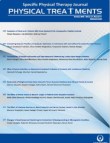Effect of Cognitive Training on Lower Limb Muscular Activity in Older Adults With Balance Impairment During Walking
The purpose of this study was to compare the effects of two different approaches of dual-task training and executive training on lower limb muscular activity in older adults with balance impairment.
This was a quasi-experimental study performed with a pre-test and post-test method. Thirty old adults (Mean±SD age=73.8±4.6 y, height=1.65±0.06 m, weight=69.17±12.67 kg) were randomly assigned to one of the three groups: two experimental groups included Cognitive Dual-Task training (CDT; participants did exercises under the dual-task condition with cognitive tasks, such as forward counting, simple visual search task, etc.) and Executive Function training (EF; included a mixture of 20 tasks involving working memory tasks, inhibitory and speed of processing tasks), and a control group. The training session lasted 45 min and was held three times a week for eight weeks. Gait muscle activity under single-task and Dual-Task (DT) conditions was recorded before and after training.
during the stance phase of normal walking, the amplitude of Electromyography (EMG) activity of right Tibialis Anterior (TA) muscle in the post-test was about 32% lower than that in the pre-test in the CDT group (P=0.011), and no statistically significant change was between pre- and post-training in the EF and control groups (P>0.05). During the swing phase of DT walking, the amplitude of EMG activity of the right Vastus Lateralis (VL) muscle in the post-test was about 15.5% higher than that in the pre-test in the CDT group (P=0.013), and in the right VL muscle during the post-test was lower than that in the pre-test in the EF group (P=0.01). In the CDT group, right ankle co-contraction during the stance phase in the post-test was statistically different from that in the pre-test. In all three groups, muscular EMG asymmetry demonstrated no statistically significant change between pre- and post-training measures (P>0.05).
Overall, both training groups showed similar muscular activity in the post-test than pre-test; however, in the EF training group, walking velocity improved more than that in the CDT group. Therefore, because of improvements in both walking velocity and muscle activities after EF training, this training mode is suggested for older adults.
- حق عضویت دریافتی صرف حمایت از نشریات عضو و نگهداری، تکمیل و توسعه مگیران میشود.
- پرداخت حق اشتراک و دانلود مقالات اجازه بازنشر آن در سایر رسانههای چاپی و دیجیتال را به کاربر نمیدهد.




